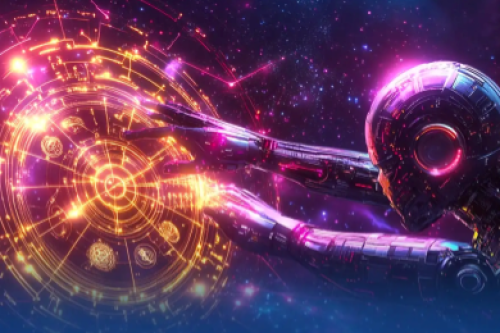Here we are several months past the midpoint of the year 2025. This year was predicted by many sources to be the great challenge of our time. It seems that things are turning out to be difficult for everyone, whether we are actually seeking change or striving to keep things steady.
2025 was forecasted by a wide range of sources—think tanks, media outlets, and academic panels—as the great challenge of our time. These predictions spanned global instability, technological disruption, and climate reckoning, each grounded in data and trend analysis.
Still, 2025 may be marking a tipping point in our technological progress. Breakthroughs in generative AI, quantum computing, and engineered living therapeutics are reshaping industries and expanding the boundaries of what humanity can design, diagnose, and understand.
In a 1995 BBC program, Stephen Hawking predicted this year would mark the rise of AI assistants and robotics in everyday life. Inventors like Archibald Montgomery Low foresaw sweeping technological changes in human experience. Nikola Tesla didn’t specifically name the specific year 2025 but he made a series of visionary predictions that resonate strongly with the world we now inhabit. Various esoteric traditions have pointed to this year as a symbolic turning point for humankind. Baba Vanga, the blind Bulgarian mystic made several predictions about 2025 involving major military conflicts, natural disasters and advances in telepathy. Most notably, Alice A Bailey identified 2025 as a moment of great planetary significance – emphasizing the dispelling of glamour and illusion as the central task leading up to this date, and envisioning a new world guided by goodwill, service, and spiritual alignment to follow.
How these forward-thinking individuals received and processed their insights—whether through scientific observation or spiritual attunement—ultimately matters less than the fact that we will soon know whether those insights have held true. Meanwhile, something extraordinary is actually unfolding above us. Astronomers report a rare and concentrated shift in the zodiacal positions of all the outer planets—a celestial choreography not seen in centuries. Astrologers track these movements as sign changes, each one representing a distinct thematic threshold with implications that will be tested in real time.
Pluto continues transit through Aquarius, entering in late 2024 and lasting until 2044.
Neptune enters Aries on March 30, 2025, leaving behind its 14-year stay in Pisces.
Saturn follows Neptune into Aries on May 25, 2025, initiating a new cycle beside Neptune.
Uranus briefly enters Gemini in 2025, before retrograding back to Taurus for final closure.
Jupiter completes its transit through divided Gemini and moves into Cancer.
With my research assisted by AI, I learned that the last time such a concentrated ingress of the outer planets into new signs occurred was just before the Renaissance. That rare celestial convergence marked a threshold moment of humanity shifting from the obscurity of the Dark Ages into a period of renewed inquiry. It my personal belief that AI is to be involved in producing a new age of expanded inquiry, where tradition and technology can meet without compromise.
The Renaissance did not arrive all at once, but the movement of the outer planets into new signs mirrored a collective reorientation toward reason and the dignity of individual thought. It was a time when classical knowledge—long buried or fragmented—was rediscovered, translated, and reinterpreted, sparking revolutions in art, science, and philosophy. What happens this time around will depend upon how humanity responds to the dynamic new energies.
If this opportunity is met with openness, discipline, and a renewed respect for nuance, this particular cycle of the outer planets could usher in another turning—one not of repetition, but of refinement. Our tools are more powerful, and the stakes are even higher. Whether we deepen our understanding or distort these energies will shape the character of what comes.
This piece may be quoted or republished with appropriate credit. Please cite the author and respect the integrity of the original work. Barbara Bianco @ Dayology.com

